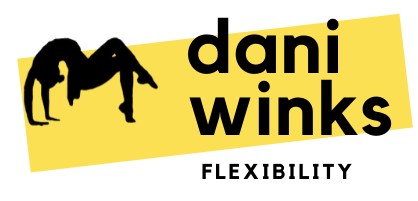4 Bird Dog Variations for Bendier Backbends
“Bird dog” is a common flow/exercise from yoga that has been adopted by other fitness disciplines because it’s a great (and gentle) exercise for core control. Despite not looking terribly bendy (the goal is generally to keep a neutral spine), this drill can still be quite beneficial for folks looking to deepen their back flexibility.
Let’s look at four different variations of Bird Dog that can help us target different areas of the backbending chain, so you can understand how to apply them all to deepen your backbending practice!
1. Regular Ol’ Bird Dog
Opposite arm & leg lifts, while spine stays neutral
Benefits / Exercise Focus:
Core engagement
Spinal stability
How To:
Starting in a tabletop position on hands and knees, with knees underneath hips, hands underneath shoulders, spine in a neutral position (that means a slight curve in the low back is OK)
Shift your weight into your left hand and right knee. Extend your right arm forwards and left leg backwards, straightening and lifting both as high as you can (at the same time) without arching your back. Hold for just a moment
Lower the arm and knee. Shift your weight so you can now lift the left arm and right leg (keeping both as straight as you can), then slowly lowering back down
Repeat for 10-16 arm/leg lifts total, alternating as you go
2. Rounded Bird Dog
Opposite arm & leg lifts, while spine stays rounded
Benefits / Exercise Focus:
Active shoulder flexion (overhead shoulder flexibility)
Active hip extension (stretching the hip flexors while engaging the glutes)
Not allowing the back to compensate for tight shoulders & hips!
How To:
Start in a tabletop position (like above), but then round your back (like doing the “cat” part of Cat-Cow) by tucking your tailbone towards the floor, sucking your belly button in, lifting your chest/ribs, and tucking your chin towards your chest. Your challenge will be to keep rounding your back for this entire exercise
Extend the right arm straight forward (palm facing in), and left leg straight backwards, keeping fingertips and toes on the ground to start
Keeping your back rounded (don’t let it flatten!), lift the left leg and right arm as high as you can, then slowly lower back down.
Be careful to keep the lifting arm straight and armpit facing forwards (shoulder externally rotated) and don’t let your back round (that means continuing to aggressively tuck your tailbone toward the floor)
This should feel very squeeze-y in the left glutes when you lift the left leg
Repeat for 10 reps in this position, then switch to the other arm/leg combo
3. Arched Bird Dog
Opposite arm & leg lifts, while spine stays arched
Benefits / Exercise Focus:
Active shoulder flexion (overhead shoulder flexibility)
Active hip extension (stretching the hip flexors while engaging the glutes)
Active spinal extension (strengthening the spinal erectors)
How To:
Start in a tabletop (like above) but arch your back (like doing the “cow” part of Cat-Cow): lifting your tailbone, dropping your belly, lifting your collar bone and head. This time your challenge will be maintaining this actively arched position for the whole exercise.
Extend the right arm forwards (palm facing in) and left leg backwards, straightening both limbs, resting your fingertips and toes on the floor.
Keeping your back arched, lift the right arm and left leg as high as you can, reaching the arm up-and-back towards the leg, actively engaging your back muscles trying to pull the back of your shoulders towards the back of your hips. Be careful to keep the lifting arm straight and armpit facing forwards (shoulder externally rotated)
Slowly lower the arm and leg back down. Repeat for 10 lifts with the opposing arm-and-leg, then switch to the other arm/leg pair
4. [Advanced] Arched Bird Dog with a Strap
For my more contortion-y friends with lots of shoulder/hip/back flexibility, you can take this drill to the next level by using a strap (a stretchy strap is going to be more forgiving than a stiff strap).
Opposite arm & leg lifts & straightens while spine stays arched
Benefits / Exercise Focus:
Deeper shoulder flexion (overhead shoulder flexibility)
Deeper hip extension (stretching the hip flexors while engaging the quads)
Active spinal extension (strengthening the spinal erectors)
How To:
Starting on hands and knees, lift the left knee and loop a strap around your left ankle. Grab the strap with your right hand, lifting your arm to hold the strap on your right shoulder with your elbow pointing forwards. Actively arch your back, lifting your tailbone and collarbone high.
Keeping your back arched, and firmly gripping the strap, lift your left foot and right arm up into the air as high as you can, aiming to straighten the left leg and right arm (I like to think about “punching” my foot and opposite fist up to the ceiling). Hold for a moment.
If you can’t straighten the arm/leg much, allow more slack into the strap (grab it farther from your foot)
If it’s easy to get both the arm and the leg straight, try grabbing the strap closer to your ankle. You can even grab your ankle and flip your grip if you have the flexibility for it (not shown).
Bend the left knee and right elbow, lowering the foot and fist back to your starting balanced position. Repeat for 10(ish) leg/arm lifts on one side, then swap the strap to the other arm/leg pair





